Unfortunately, Colon is an armpit of a city, so all of the merchants live in Panama City. Every day, they drive across the country (about an hour and a half) to Colon where they work. Many of my wife’s relatives make this trip every day. Most of them have drivers so they can nap or make phone calls during the ride.
You would think that with so much money involved in Free Zone trade, Panama would have constructed a modern, multi-lane highway from Panama City to Colon. You’d be half right. As you leave Panama City, the road is wide, smooth and fast. After about half an hour, it deteriorates into a shoddy, two-lane road full of potholes and stray dogs, which merchants negotiate in their sparkling Mercedes sedans every day.
Several people told me that within two years, the wide, smooth highway would be extended the full way to Colon. But one of my wife’s cousins told me that he’s been hearing such stories for 40 years, and nothing ever gets done.
On the way, we stopped at a small “kiosko” and bought “pipas frias.” These are green coconuts that are kept in a cooler. For about 50 cents, a guy will hack away at it with a machete until he exposes a small hole, providing access to the coconut water inside. You stick a straw in the hole, and it’s a delicious treat.
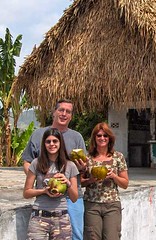
We avoided Colon and headed to the Gatun locks of the Panama Canal. There is a small one-lane drawbridge that folds down, enabling cars to cross the canal at sea level when there are no ships coming through. Our car approached a small guard hut, and a traffic signal indicated how long we would have to wait. When the signal changed to green, we drove across. Here you see a huge cruise ship in the lock, waiting to transit to the Caribbean:

As we drove across the bridge, we could see the ancient, leaky lock doors, holding back millions of gallons of water and the giant cruise ship.
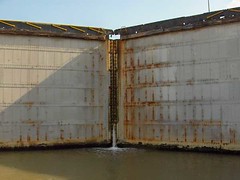
I wondered if I would even have time to think, “Holy shit!” if the doors suddenly burst open, throwing the cruise ship on top of our car.
We continued through Fort Sherman, which is an abandoned U.S. military base. For some inexplicable reason, the Panamanian government has allowed this base to sit empty since 2000, even through it has large functional buildings already constructed, sitting on gorgeous white sand beaches.
We continued along the coast until we came to a dirt road that would take us to Fort San Lorenzo, a fort that was built by the Spanish in the 1570’s and sits on a promontory defending the mouth of the Chagres River. The road runs through thick jungle, and you have to be careful because there are sometimes deep ruts and washout areas. At one point, a coatamundi (a Central American version of a raccoon) crossed the road, but too quickly for a picture. For years, I’ve wanted to see one thing in my lifetime: wild monkeys in the trees. But the raccoon was the only animal we saw that day.
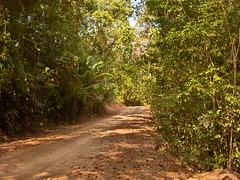
We had visited the ruins about 20 years ago, and they were overgrown with thick jungle vegetation. It has all been cleared away, and the fort offers spectacular views of the Caribbean and the mouth of the Chagres.
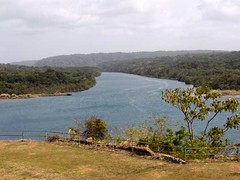
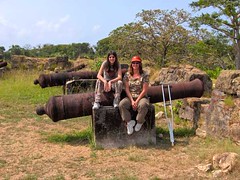
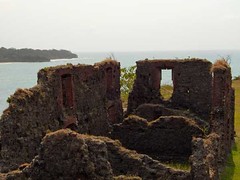


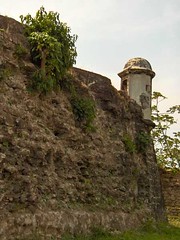

While having this last picture taken, I could hear howler monkeys hooting and grunting in the jungle across the bay. It was discouraging to know they were so close, but completely hidden from view.
We saw these cool bird nests hanging from a tree outside the fort. This kind of weaver bird is found all over Central America and the Caribbean.
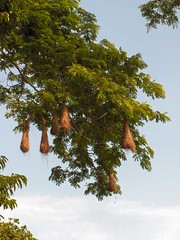
There are signs posted around the fort that give you the story of its history. From what I gather, it was a colossal failure, failing to repel a single siege. It was most notably conquered by Morgan the Pirate, who took boats up the Chagres River and hacked his way through miles of thick jungle to attack and destroy Panama City.

No comments:
Post a Comment